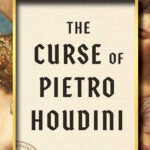By Roger Barlow
For those that may not have read the column of last month, I shall do what I can to get you up to speed.
Frankfort’s founder, General James Wilkinson was indeed a soldier and a statesman — but also an opportunistic double-agent. He drank heavily, was vain and known by many as a self-serving boar of a man. But enough of his good qualities.
Even though he served in the Revolutionary War, he was also feeding information to the Spanish Crown who, incidentally, addressed him as “Number 13.” Kentucky’s proximity to the Mississippi River (and the Spanish territory Louisiana) proved to be too enticing and allowed him to play both countries against one other, holding out to see which could be the most advantageous to him. Appropriately, he ran in circles with Benedict Arnold and Aaron Burr, dreaming of one day becoming Generalissimo of the Empire of Mexico.
President Theodore Roosevelt, in writing “The Winning of the West” (1894), had this to say about Wilkinson:
“In character, he can only be compared to Benedict Arnold, though he entirely lacked Arnold’s ability and brilliant courage. He had no conscience and no scruples; he had not the slightest idea of the meaning of the word honor … He was treacherous to the Union while it was being formed and after it was formed … In all our history there is no more despicable character. ”
The faces behind the streets:
In true Wilkinson fashion, he branded many streets of old Frankfort after friends, family and anyone else that he intended to gain favor, including a Spanish colonial governor.
Wilkinson Street: Naturally, the egomaniac Wilkinson named one of the most beautiful streets after himself. Had he remained in Frankfort much longer (1786-1792) he may very well have renamed Frankfort after himself!
Ann Street:
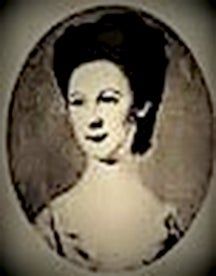
Ann Biddle Wilkinson (Image provided)
Ann Biddle Wilkinson (1742-1807). The first wife of Wilkinson, born to a prominent Philadelphia family, was a remarkably beautiful lady for a man such as Wilkinson. Homesick, Ann would be left in the youthful river town of Frankfort while her husband was spinning his intricate web of deceit.
St. Clair Street:
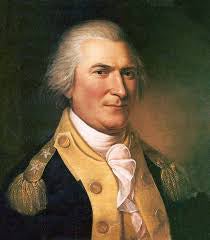
Gen. Arthur St. Clair (Image provided)
Gen. Arthur St. Clair (1737-1818) was born in Scotland, but soon established himself as a wealthy business owner in Pennsylvania. After an extensive military career, he was appointed governor of the Northwest Territory, which included what is now Ohio. Wilkinson most likely saw this as a beneficial alliance due to the Ohio River. St. Clair died in poverty.
Washington Street:
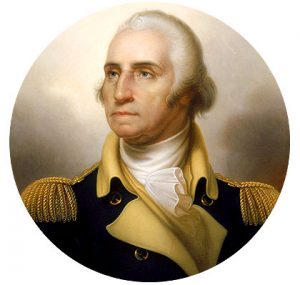
Named after George Washington (1732-1799); This was an obvious choice.
Lewis Street:
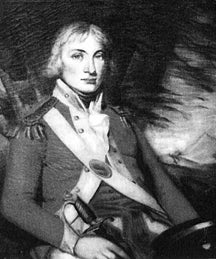
Gen. Andrew Lewis (Image provided)
Gen. Andrew Lewis (1720-1781) was born in Ireland. A surveyor by trade, Lewis also served during both the French and Indian and Revolutionary wars.
Clinton Street:
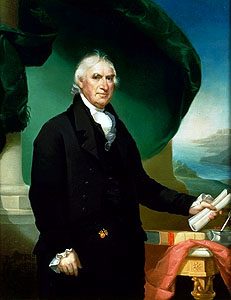
Gen. George Clinton (Image provided)
Gen. George Clinton (1739-1812) was born in the Kingston, Ulster County area of New York. Clinton’s military service during the Revolutionary War was followed by being named the first governor of New York and then the fourth vice-president under both presidents Jefferson and Madison.
Montgomery Street (later renamed Main Street):
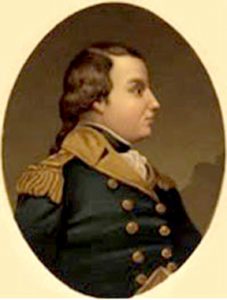
Major General Richard Montgomery (Image provided)
Gen. Richard Montgomery (1738-1775) was born in Ireland. A farmer by trade, Montgomery bravely served in the Continental Army, but was killed during the Battle of Quebec.
Madison Street:
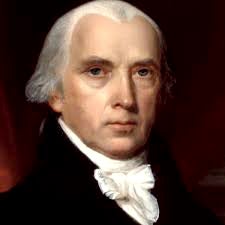
James Madison (Image provided)
Although destroyed by the construction of the Capital Plaza area complex, Madison Street bears mention. Formerly located on the west side of the Old Capitol, Madison Street bordered the edge of what is currently the John C. Watts Federal Building. Madison, father of the constitution, would later become the fourth president of the United States.
High Street: Likely named after Wilkinsons mother, Elizabeth “Betsy” Heighe.
Wapping Street: While not named after an individual, Wilkinson surprisingly allowed a homesick Englishman friend, John Instone, (1754-1818) to christen this beautiful street after London’s old Wapping on the Thames.
Mero Street: Spanish Colonial Governor of the Louisiana and Florida provinces Esteban Rodríguez Míró (1744-1795) was probably the most telling of Wilkinson’s associates. It was during this association that Wilkinson in 1787 declared his allegiance to Spain, received a Spanish pension, while also serving under George Washington.
As written last month, Gen. James Wilkinson, founding father of Frankfort, was a scoundrel, but he was our scoundrel. Regardless of all of his shortcomings, let’s not forget that had there been no Wilkinson, Frankfort may have never attracted commerce and most certainly never would have been selected as the capital of Kentucky.
Buried in Mexico City in 1825, it is, however, no doubt that Wilkinson is most likely turning in his grave, still looking for praise, wealth and power.









